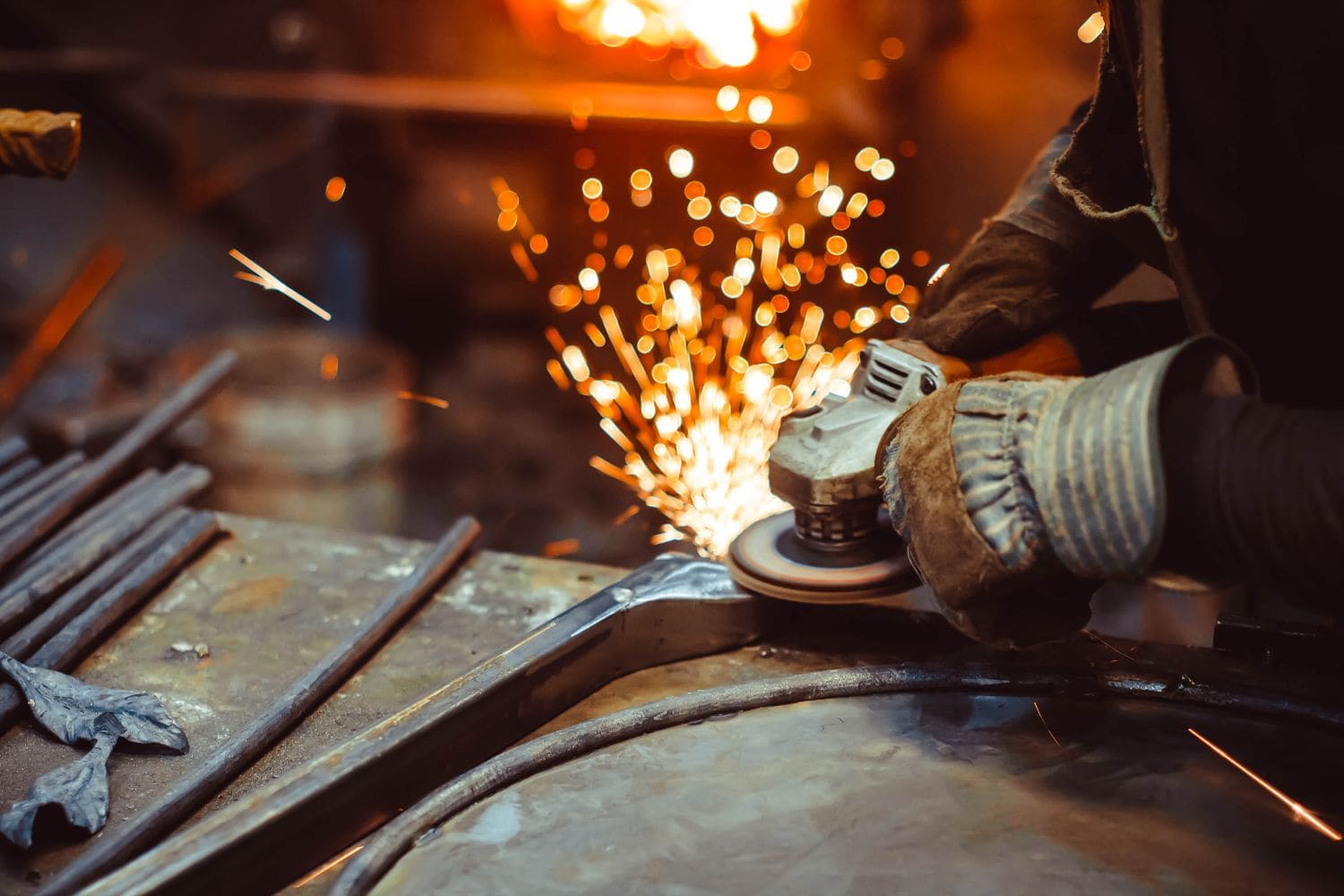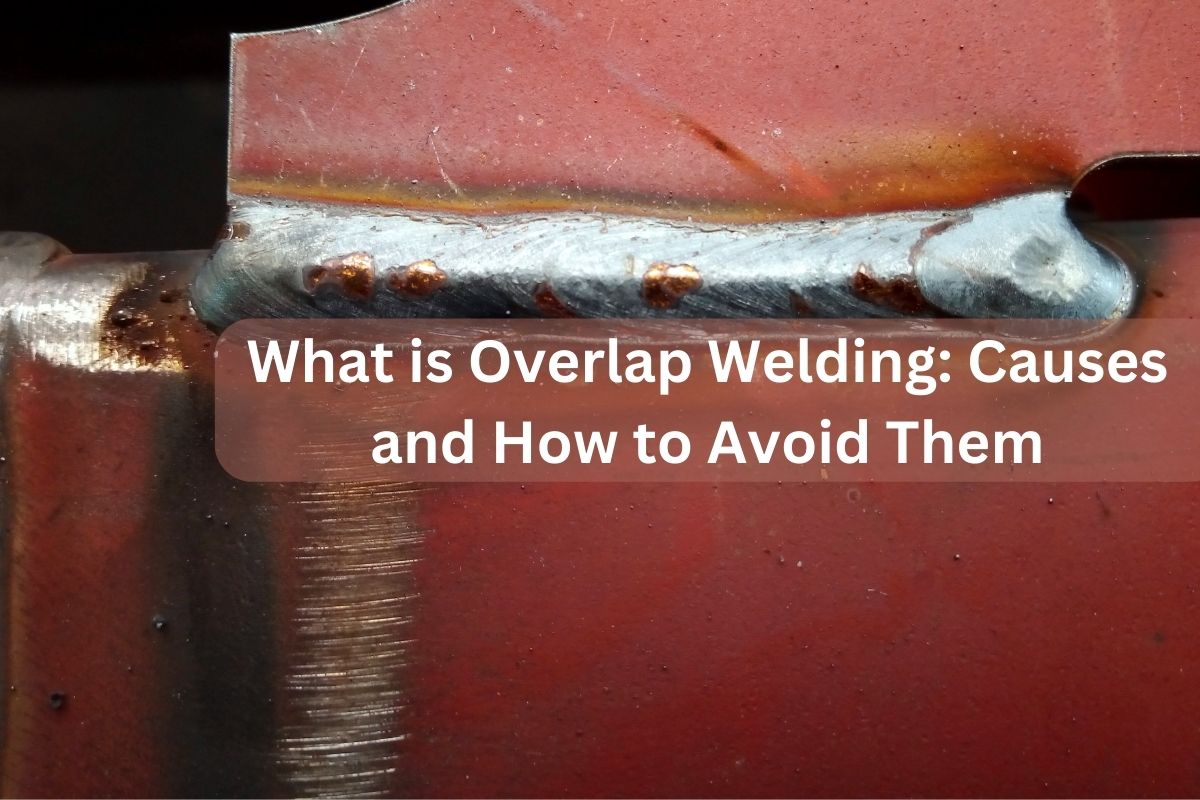Welding is a process of joining two pieces of metal using a correct technique and machine setting.
If one of these parameters is improper, it will lead to defects such as overlap welding.
Instead of repairing the defects after welding, it is better to prevent them by welding carefully.
Then, what is the overlap welding definition, and what causes this defect?
This article will explain welding overlap, its causes, and some tips to avoid this defect.
Additionally, I share my experience in fixing it.
What is Overlap Welding?
The process of welding will melt the base metal and filler.
Then, these materials fuse and result in a strong weld joint.
However, sometimes when I put the extra filler into the weld pool, it cannot fuse with the base metal. As a result, the filler melts and flows around the bead.
It is like a swimming pool that is full of water. When the amount of water is larger than the capacity of the swimming pool, the excess water will flow out around the pool.
Overlap can occur in various types of welding. Overlap arc welding can occur in MIG, TIG, or stick welding. It is because different factors cause them.
Even though overlap is considered a welding defect, it is not really dangerous.
The reason is this defect does not impact the strength or performance of your weld.
However, this defect only affects the aesthetics of the workpiece.
That is why you must understand how to prevent and fix overlap welding defects.
Read Also : Slag Inclusion in Welding: Definition, Causes & How to Avoid
What are Overlap Welding Causes?
Overlap can occur for several reasons.
For example, it can happen because of poor technique, incorrect welding parameters, and inadequate preparation of the joint.
If you want to know how to detect overlap in welding, you should understand what factors can lead to this defect.
Here I summarize the major factor that causes overlap in welding.
- Incorrect Amperage Setting
The welding parameter that really impacts overlap is the current or amperage setting.
Let me share my experience. When I set the amperage too high, the excess filler material will flow out. Then, it solidifies around the bead.
In addition, if these parameters are not set correctly, the weld may not penetrate the base metal, resulting in the overlap.
Adjust the amperage based on the metal type and the electrode size.
- Slow Travel Speed
Furthermore, when I move the electrode slower, the filler material accumulates and flows.
So, when you detect overlaps, you should increase the travel speed. But moving too fast can also result in another problem.
Just find the proper speed to get the best result.
- Incorrect Electrode
Electrode selection also contributes to overlaps.
So, it is necessary to determine the right electrode size and angle.
When the angle of the electrode is incorrect, the filler will be deposited on one side of the bead. In this case, overlapping will occur.
Besides, overlap can also occur when you use a larger electrode size.
So, if you want to prevent this defect, you should choose the right size of electrode.
- Poor Welding Technique
Welding requires a steady hand and good technique.
If the welder moves the torch or electrode too quickly or too slowly, or if they hold the torch at the wrong angle, overlap can occur.
How to Prevent Overlap in Welding?
After knowing the causes of overlaps, it will be easier for you to avoid overlaps.
In addition to using the correct setting for the welding machine, I can prevent this defect by applying the proper welding technique.
These are some powerful tips to prevent overlaps in welding.
- Use Small Electrode
When using a large electrode, I may apply excessive filler material to the weld pool.
So, it is advisable to use a smaller size of the electrode to reduce the risk of overflowing filler.
- Adjust The Current
If the direct current level is too high, it will cause overheating.
So, how to detect it? Just check the electrode.
If it glows too bright, it means that the current or amperage is too high.
Remember to utilize the current amount based on the electrode size. 1-inch electrode requires 1000 amps. Besides, ¾ inch electrode needs 250 amps.
- Adjust The Travel Speed
The travel speed rate should not be too slow. But it does not mean that you have to move faster.
Just keep the speed of travel moderate. If the travel speed is too high, it can cause undercutting and porosity.
- Properly Prepare The Joint
The joint must be properly cleaned, beveled, and aligned before welding. This will ensure the weld metal can penetrate the base metal and create a strong joint.
- Monitor The Welding Process
You should monitor the welding process to ensure that the weld metal can penetrate the base metal well.
When you detect overlaps, directly adjust the welding parameters.
For instance, you may need to lower the current level and speed up the travel rate.
How to Fix Overlap in Welding?
Even though I have been attentive in adjusting the parameter and doing the right technique, sometimes overlaps still occur.
But do not worry, as I’ll share overlap welding remedies.
First of all, it is necessary to determine the weld tow border. Mark this border.

Next, grind off the weld overlap based on this mark. Be careful when grinding so that you do not damage the joint.
Use a grinding disc that is suitable for the type of metal being welded. Grind down the weld until it is flush with the base metal.
Be careful not to remove too much material, which can weaken the joint.
After grinding the overlap, the weld will look neater and more professional.
By following these steps, you can repair overlap and produce strong, reliable welds.
So the weld can meet the required standards for quality and safety.
Read Also : Welding Crack: Causes & Effective Prevention Methods
In conclusion, overlap welding is a common defect due to poor technique and incorrect welding parameters.
To ensure flawless and good welding, always monitor the process. When detecting overlaps, adjust the amperage and speed to prevent them from being severe.


